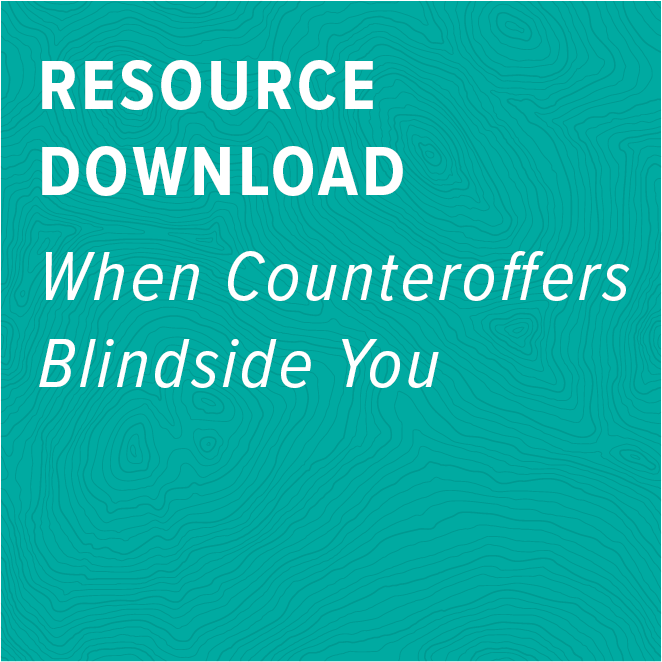
Take Your Candidates on a Journey They’ll Remember
Let me tell you a story. An executive candidate for a major, iconic outdoor brand postponed his Labor Day plans to participate in a final round of interviews. At the end of the process, he was passed over for the job—but he valued the experience and the new connections he’d made with this company. He wrote a long letter to the CEO of the company telling him how great the experience was regardless of the outcome and thanking him for the opportunity. The CEO’s response? An email with a single word: “Thanks.”
Now, setting aside the reality that this candidate will likely never purchase from this brand again if this is a true story—which it absolutely is—do you think if there was ever another open position at this company that this candidate would actually apply? I know I wouldn’t.
If you haven’t been thinking about your employer brand and the experience you’re creating for every candidate that interacts with your brand, you should be.
Customer Journeys, Candidate Journeys
Consider this: How much effort do companies put into acquiring new customers? Marketing departments put an enormous amount of time, effort, and resources into mapping out customer journeys. Nothing happens by accident, whether a company is developing their customers, nurturing them, or converting them.
When you introduce a new product into the market, you know a certain group of your most avid customers are going to take notice. If I’m looking for a new bike, I already know that I need to look at Cannondale. That means Cannondale has an easier time acquiring my business and taking me on a journey because I’m already familiar. But if Cannondale were to stop at people who are already aware of their product and not try to create new awareness, they won’t be in business very long.
How is reaching the talent you need any different?
If all you’re doing is posting jobs, that’s the equivalent of releasing a new product and only capturing people who are already paying close attention to your brand. You have to put as much effort into developing your employer brand as you do your consumer brand, whether you’re hiring right now or not.
Build a Stronger Employer Brand Now
Developing an attractive employer brand starts with communicating your culture. Just as you have a plan for producing content that speaks to your customers and inspires them to purchase from you, start telling the stories of why people come to work for you every day. Make sure that when candidates learn about an open position at your company, they’ll find plenty of content that will help them get a feel for your values and the actual experience of joining your team.
Beyond that broad advice, I have one much more concrete recommendation to make if you’re serious about creating a strong employer brand: Just respond to your candidates. The one-word response from the CEO in my story doesn’t cut it, but you don’t have to spend all your time as a hiring manager sending personal rejection letters to everyone who applies and isn’t a good fit.
I’ve got a template I use whenever a candidate reaches out to Highline and it’s clear they’re not going to work out for a position we’re trying to fill. I don’t get back to every single person who reaches out, but I’m damn near 100% with my response rate. Sure, it takes a minute to customize my template and send it back, but who knows what positions I’ll be working to fill in the future, and which candidates I’ve already connected with who might be the absolute perfect fit for one of them.
Train yourself to think about every candidate the same way you think about your customers. Give them the respect they deserve, and you’ll be well on your way towards building a strong employer brand people will get excited about.
==========
About the Author: Tony O’Neill is the Founder and President of Highline Outdoor Group — the purpose-driven executive search firm for forward- thinking outdoor industry and sporting goods companies and brands.
[su_row][su_column size=”1/2″ center=”no” class=””] [/su_column] [su_column size=”1/2″ center=”no” class=””]
[/su_column] [su_column size=”1/2″ center=”no” class=””]
Counteroffers Whitepaper
When your #1 candidate makes it all the way to an offer only to accept a counteroffer from their current employer, it's a devastating loss of time, money, and goodwill. Download "How Did This Happen? When Counteroffers Blindside You" to manage the risk of counteroffers in your executive searches head-on.